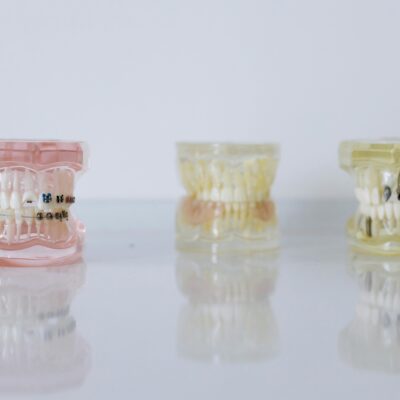Bone grafting plays a critical role in modern dentistry, especially when preparing for dental implants. It helps rebuild and strengthen areas of the jawbone that may have weakened due to tooth loss or other factors. By augmenting the bone structure, this procedure ensures a solid foundation for implants while restoring overall oral health. If you’re exploring options like dental implants and are wondering about the need for bone grafting, we’re here to guide you every step of the way. Learn more about bone grafting and how it can improve your dental outcomes.
What is Bone Grafting?
Bone grafting is a transformative dental procedure designed to restore and rebuild jawbone density and structure. When bone loss occurs due to tooth loss, injury, or other conditions, it can compromise oral health and the success of treatments like dental implants. With bone grafting, there’s an opportunity to rejuvenate your jawline, ensuring a solid foundation for oral restoration.
How Bone Grafting Works
The process of bone grafting involves supplementing the jawbone with additional bone material to promote healing and regeneration. The material can come from various sources, including your own body (autografts) or external sources like synthetic constructs. During the procedure, once the bone graft material is carefully placed into the affected area, it serves as a framework for your natural bone to regenerate and grow. Over time, this leads to a stronger, healthier bone structure capable of supporting dental implants or other restorations.
Types of Bone Grafting Materials
There are several types of bone grafting materials available, each tailored for specific needs:
- Autografts: Harvested from your own body, often from the hip or a separate location in the jaw. This option integrates well and carries no risk of rejection.
- Allografts: Sourced from a donor, these materials undergo rigorous processing to ensure safety and compatibility.
- Xenografts: Derived from animal sources, such as bovine bone. These materials act as a scaffold for your natural bone to grow around.
- Synthetic Materials: Includes man-made options like calcium phosphate or bioactive glass that mimic the properties of natural bone.
By utilizing advanced materials and techniques, tooth restoration procedures can adapt to individual needs effectively.
When is Bone Grafting Necessary?
Bone grafting is recommended when the jawbone has suffered significant loss or deterioration. This might occur due to:
- Advanced Tooth Loss: When teeth are missing for an extended period, the surrounding bone begins to resorb, or shrink.
- Injury or Trauma: Damage to the jawbone from accidents or injuries can create defects requiring repair.
- Preparation for Dental Implants: A strong jawbone is essential to anchor dental implants properly. If the bone isn’t sufficient, grafting ensures the implant’s stability and longevity.
Being proactive about oral health ensures your smile stays strong and functional for years to come. Bone grafting delivers both restorative and preventive care, offering a sturdy foundation for your dental future. To better understand if bone grafting is right for you, get in touch with us for more details about the process and benefits.
Bone Grafting and Dental Implants
Dental implants are an innovative solution for missing teeth, but their success hinges on the health and strength of your jawbone. In many cases, bone grafting is essential to ensure the implant has a secure foundation. Let’s explore why your bone health matters, what the timeline looks like for this process, and how challenges in bone grafting are addressed.
The Role of Bone in Dental Implant Success
Your jawbone plays a key role in the success of dental implants. A strong, healthy bone anchors the implant securely, ensuring stability during everyday functions like chewing and speaking. However, when bone density is insufficient, the implant cannot integrate properly, increasing the risk of failure.
Bone grafting helps solve this problem. By rebuilding and strengthening areas of weakened jawbone, grafting provides the additional support needed for a dental implant to integrate and thrive. This seamless connection between the implant and the bone mimics your natural tooth root, offering durability and long-term functionality.
The Timeline for Bone Grafting and Implants
The process of bone grafting is a journey that requires time for your body to heal and rebuild. After a bone grafting procedure, most patients will need several months—typically 4 to 6 months—for the grafted area to integrate with the existing bone. This waiting period ensures the foundation is stable enough for implant placement.
Once healing is complete, the dental implant can be placed, following a meticulous process to ensure long-lasting results. For more information about what to expect with dental implant placement, visit our dental implant placement services.
Common Challenges and Solutions
Bone grafting, while effective, can come with potential challenges. Some patients may experience longer healing times due to factors like age, smoking, or underlying health conditions. It’s also possible to encounter mild swelling or discomfort during recovery.
To address these challenges, we focus on personalized care, taking detailed steps to ensure your comfort and success. Advanced imaging techniques are used to evaluate the area before the procedure, enabling precise placement and minimizing risks. Additionally, we provide clear post-operative instructions and follow-up care tailored to your unique needs.
With proper preparation and attention to detail, we aim to make the bone grafting process as smooth as possible, setting the stage for successful dental implants and a restored smile. You can learn more about our comprehensive oral surgery options here.
The Benefits of Bone Grafting
Bone grafting is an essential dental procedure for individuals facing bone loss in their jaws. It not only restores the jaw’s structural integrity but also promotes overall oral health. This process has benefits that extend far beyond functional improvements, impacting aesthetics and long-term health outcomes.
Enhanced Jaw Support
When bone density diminishes, it weakens the jaw and compromises its ability to support natural teeth or dental implants. Bone grafting strengthens the affected areas by introducing new material, which regenerates and integrates with the existing jawbone. This reinforcement is vital for successfully anchoring dental implants, ensuring their long-term stability and performance. A strong jawbone also supports the surrounding teeth, preventing further complications. Learn more about how bone grafting plays a crucial role in dental implants.
Preventing Future Bone Loss
Once bone loss occurs, the resorption process tends to accelerate, making intervention critical. Bone grafting counteracts this by stimulating the body’s natural bone regeneration process. This means you’re not just addressing existing deficiencies but also actively preventing further deterioration. By maintaining a healthy jawbone, you can reduce the risk of other oral health issues such as shifting teeth, gum disease, or additional tooth loss.
Improved Facial Structure
The jawbone plays a significant role in defining your facial features. When bone loss occurs, it can lead to a sunken or aged appearance due to the reduced support for your facial muscles and skin. With bone grafting, the restoration of a robust jawbone helps maintain and even enhance your natural facial contours. This not only improves your oral functionality but also contributes to a more youthful and confident appearance.
Bone grafting provides solutions beyond functional restoration, offering both preventive care and cosmetic benefits that enhance your overall quality of life. By addressing the underlying concerns of bone loss, this procedure sets the foundation for long-term oral health and aesthetics.
What to Expect During the Bone Grafting Procedure
When considering bone grafting, knowing what to anticipate helps ease any concerns and builds confidence in the process. From your initial consultation to post-procedure recovery, being informed ensures a smoother and more successful experience.
Initial Consultation and X-Rays
The journey starts with a detailed initial consultation. We prioritize a comprehensive examination, which includes digital imaging and X-rays to assess the structure of your jawbone. This step is essential in customizing your treatment plan. Every person’s dental needs are unique, and understanding the specifics of your bone health makes the process more precise and efficient. It enables us to determine the type of bone grafting needed and ensures the procedure is tailored entirely to your individual anatomy.
The Procedure Step-by-Step
Understanding the procedure can bring clarity and comfort. Here’s what you can generally expect during a bone grafting procedure:
- Anesthesia and Comfort Measures: To ensure a pain-free experience, local anesthesia is administered. For those who prefer additional relaxation, sedation options may be available.
- Graft Preparation: The bone grafting material—whether sourced from your body, a donor, or synthetic supplies—is carefully prepared based on your custom treatment plan.
- Site Preparation: The targeted area of the jawbone is cleaned and prepped to receive the grafting material.
- Graft Placement: The bone graft material is positioned strategically in the affected area, acting as a scaffold for your natural bone to regenerate.
- Securing the Graft: To protect the graft and hold it in place, a protective membrane may be used. The area is then sutured to ensure proper healing.
Each step is handled with accuracy to ensure your comfort and the success of the procedure.
Recovery and Aftercare
After the procedure, careful recovery and aftercare play a vital role in achieving the best results. Healing typically takes several weeks to months, depending on the extent of the bone graft. During this time, it’s crucial to follow the aftercare instructions provided by our team.
Key guidelines for recovery include:
- Taking prescribed medications as directed to manage pain and prevent infection.
- Avoiding physical strain and maintaining a soft-food diet during the initial days.
- Keeping the surgical site clean by gently rinsing with an antibacterial mouthwash.
- Attending all follow-up appointments to monitor progress and ensure proper healing.
For comprehensive guidance on post-surgery recovery, visit our oral surgery services. Adhering to these steps helps in fostering bone regeneration, ensuring the graft fully integrates with your natural bone.
By staying prepared and informed throughout the process, bone grafting can become a manageable and highly beneficial step toward restoring your oral health.
Conclusion
Bone grafting is a transformative step in rebuilding jawbone health and preparing for successful oral restorations, such as dental implants. It offers a pathway to improved jaw support, prevention of further bone loss, and enhanced facial aesthetics. These benefits not only elevate your confidence but also fortify your overall oral health for the future.
If you’re considering dental implants or looking to address bone loss, we encourage you to explore the possibilities of bone grafting. Take the first step toward restoring your smile. Schedule a consultation with us today and experience personalized care designed to meet your unique needs.










